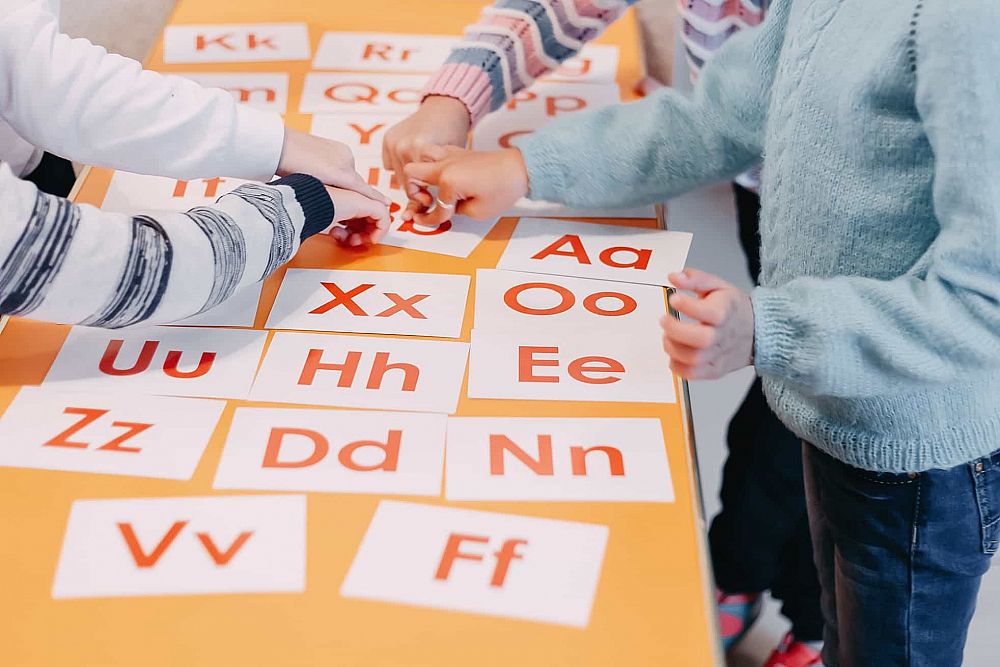8 Classroom Activities that are Great for Kinesthetic Learners

Kinesthetic learners are learners that learn through objects that they can touch and explore. They also learn best by discovering and experiencing and particularly enjoy physical activities that involve getting out of their seat and moving around. Unlike visual and auditory learners, kinesthetic learners can be tough to accommodate in the classroom because of their need to be physically active. Since they need to be active in their learning, they may get bored very quickly if you allow them to simply listen and look at your visual aids or video presentation. As teachers, we must always be versatile and understand how to incorporate different types of learners. Luckily, there are many fun ways for kinesthetic learners to learn.
Table of Contents
Do you want to teach English as a foreign language abroad?
Check out what our course grads say in our many video testimonials!
This post was written by our TEFL certification graduate Nguyet M. Please note that this blog post might not necessarily represent the beliefs or opinions of ITTT.
Listen to this blog post:
Charades
One great example of a game for kinesthetic learners is charades, a classic game best suited to action verbs and sports. For example, to be able to teach verbs, you need to act out each of the verb words yourself, and have students say each one aloud with you. After that, you can divide the class into two groups. Each student should act out the words then his or her teammates will guess what it is. Encourage them to be silly, make faces or exaggerate their actions if they need to. His or her teammates need to answer in a complete sentence to get the point for each round.
Also read: 11 Fun ESL Activities for Young Learners
Songs
This activity is generally a winner with young learners since they like to sing songs, however, if you add some movement or miming, they'll enjoy it even more. In fact, it's tough for most kids to sing songs while sitting all the time. Singing and moving comes naturally to them. So, why not take advantage of this and incorporate various songs with movement? Here are some great songs you can use or adapt to fit your needs: Head, Shoulders, Knees and Toes – A classic song used to teach children the parts of the body. Wheels on the Bus – Have them line up and go around the classroom in a single or double file, or organize their seats so that they resemble a bus.

Also read: Songs in the ESL Classroom for Younger Beginners
Role and Action Playing
This activity is more appropriate for adult students. You have to provide each student with a role to act out. Tell the student what scenario he or she should act out, but don't tell the other student what it is. For example:
Student A – you need to find the closest public toilet and you ask somebody for directions. You can't speak English well, and only understand some basic expressions.
Student B – you will be stopped in the street by someone who needs directions, however this person can't speak English well, thus you must interpret the words in gestures to find out where they need to go.
Also read: 7 Fun Activities for Teaching Vocabulary in the ESL Classroom
Fly Swat
The Fly Swat game works best for vocabulary review, and is nice to play at the end of a lesson introducing new subject material. Using PowerPoint (or merely write on the board), prepare a slide full of vocabulary words sprawling all over the page. Have a series of definitions and questions about these vocabulary words ready to read to the students. To make it extra fun, write the words on pictures of flies! Split the class in half and be prepared for a good time. Each team sends up one person to the front of the classroom and they are each given a fly swatter. Read the question aloud, and then the first student to swat the answer on the board wins the round! Note: You should declare the rule that you may only hit one word per turn, to prevent students from mindlessly hitting as many words as they can.
Also read: 4 Super Easy Tips for Teaching Vocabulary to Young Learners
Telephone
This game will help your students practice word pronunciation and articulation of sounds that they're not used to making. Have all the students sit or stand in a line or a circle. Make up a phrase or sentence and whisper it in the first student's ear. That student then whispers the phrase to the next person, and so on and so forth. If anyone would like the phrase repeated to them, students will say "Operator!" however this can only be done once per person. At the end of the game it's always really funny to see how different the phrase turns out! Note: Another option is to separate the class into two groups and see who gets closest to the original phrase!

Also read: 7 Awesome ESL Conversation Activities to Really Get Your Students Talking
Hangman
All the students need is a pen and paper and a good idea! So instead of choosing the word for the group let the students alternate picking the word each round and drawing the blanks. At the end of every game, have students either talk about the definition of the uncovered word or try and use it in a sentence. Hangman can work well after any kind of ESL lesson. It can be used to practice vocabulary or numerous parts of speech. For extra fun, have the students play hangman after watching a video clip and only allow them to use words from that clip.
Also read: Top 5 Icebreakers for New TEFL Teachers
Song Puzzle
For this game, you'll need to choose a song and print out the lyrics with enough space between the lines so you can cut the lyrics into strips. Separate students into small groups of 2 or 3 and provide each group a complete set of the lyric strips. Then play the song over and over, while the groups try to organize the lyrics into the proper order. The first group to arrange the lyrics correctly wins the game. After the students have all figured out the correct order of the lyrics, sing them aloud as a class together! Doing song puzzles reinforces sentence order and helps students with their fluency of speech.
Also read: 4 Tips on How to Teach English Using Music
Storytelling Memory Game
In this game, students should form and sit in a circle. The first person starts the story with a fragment phrase like "It was a holiday," and the next person must repeat what the first person said and add a phrase of their own. For example, "It was a holiday and the night was cold…" Keep going around the circle until someone messes up! Students love this game because they get to work together to be creative with their imagination. Creative thinking encourages English learners to use words that they don't use on a day to day basis, and making a story allows students to practice sentence structure in a casual and funny way.

Also read: The 5 Best TEFL Games for Adult Students
Do you want to teach English as a foreign language abroad?
Apply now & get certified to teach english abroad!
Speak with an ITTT advisor today to put together your personal plan for teaching English abroad.
Send us an email or call us toll-free at 1-800-490-0531 to speak with an ITTT advisor today.
Related Articles:
- What's Stopping You from Teaching English Abroad?
- 7 Activities for Teaching Conditionals in the ESL Classroom
- TEFL Breakdown - What Subjects Will Your TEFL Course Cover?
- 7 Activities for Teaching the Past Progressive for the ESL Classroom
- The 3 Most Popular ESL Games That Work in Every Classroom
- 7 Activities for Teaching the Present Perfect for the ESL Classroom



